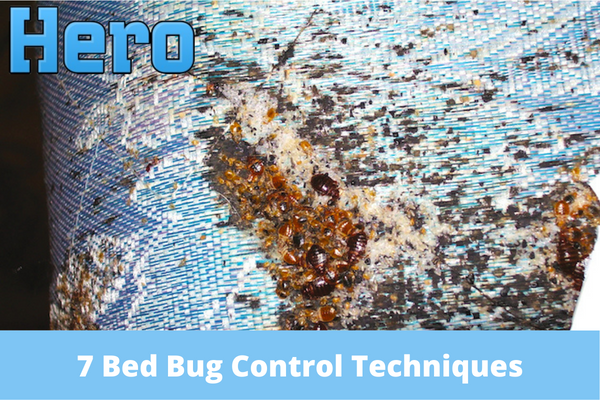Understanding Bed Bug Treatment: Proven Techniques for Success
Understanding Bed Bug Treatment: Proven Techniques for Success
Blog Article
Discover the very best Bed Insect Treatment Techniques for Your Parasite Control Plan
When faced with a bed insect problem, determining the most reliable treatment techniques becomes vital for effective pest control. Picking the ideal bed insect treatment approach customized to your details scenario is necessary for attaining long-term outcomes.
Identifying Bed Insect Invasions
Identifying signs of a bed bug problem can be crucial in effectively dealing with the problem and stopping additional spread in a prompt manner (Bed bug treatment). Bed insects are evasive bugs that conceal throughout the day and appear at evening to eat blood. Typical indications of a bed insect invasion include reddish-brown spots on bed linen or furniture from smashed pests, tiny dark places that are bed bug waste matter, shed skins in areas where bed bugs hide, and a wonderful, moldy smell in severe infestations
Motivate identification of a bed pest invasion is vital to avoid the situation from intensifying and calling for extra considerable therapy approaches. If you think a bed pest invasion, it is advisable to look for professional parasite control help to successfully eliminate the parasites from your home.
Non-Chemical Therapy Techniques
Non-chemical therapy techniques provide reliable options for dealing with bed pest infestations without relying on traditional pesticides. Warm treatment is one such technique that includes raising the temperature in ravaged areas to levels that are dangerous to bed bugs. Furthermore, vapor treatment can be used to eliminate bed insects and their eggs by exposing them to high temperature levels, making it a useful non-chemical choice for combating invasions.
Chemical Therapy Choices
Having actually checked out efficient non-chemical methods for addressing bed insect infestations, it is important to think about the efficacy of chemical treatment alternatives in combating these resilient bugs. Chemical therapies play an important function in bed insect control, specifically in severe invasions where non-chemical techniques might not give enough relief. There are various types of chemical therapies available for handling bed insects, consisting of pesticides, desiccants, and insect development regulators.
Insecticides are generally used to kill bed pests on contact and offer recurring defense versus future infestations (Bed bug treatment). Desiccants function by harming the external waxy layer of bed insects, bring about dehydration and fatality. Insect development regulators disrupt the bed bug life cycle by inhibiting their growth from nymphs to grownups, eventually decreasing the populace in time
When taking into consideration chemical therapy choices, it is critical to focus on safety and security by adhering to tag guidelines, making use of appropriate protective gear, and thinking about the possible risks to family pets and humans. Consulting with a professional parasite control solution can assist identify one of the most efficient and secure chemical therapy for your details bed bug problem.
Integrated Pest Management Techniques

IPM strategies for bed bug control may consist of comprehensive examination to identify the extent of problem, identification of crucial harborage websites, and execution of cleanliness visit the site actions. Furthermore, reducing clutter, sealing splits and crevices, and eliminating prospective hiding areas can aid discourage bed insects from establishing themselves.
Moreover, non-chemical control approaches such as warm treatment, vacuuming, vapor cleaning, and using bed insect catches can be efficient elements of an IPM strategy. These strategies target bed bugs at numerous life phases and disrupt their reproductive cycle, resulting in population decrease.
Regular surveillance and follow-up examinations are vital in IPM to examine the effectiveness of control measures and make necessary changes. By including incorporated insect administration techniques into your bug control strategy, you can achieve long-lasting success in managing bed insect invasions.
Specialist Extermination Solutions
Expert elimination services supply customized proficiency and sources for properly getting rid of bed insect infestations. Bed pest invasions can be especially challenging to deal with as a result of their strength and capacity to conceal in different cracks and crevices. Specialist pest control experts are educated to recognize the signs of bed bugs, situate their hiding spots, and use targeted therapy approaches to remove them efficiently.
When choosing a professional extermination service for bed insect control, it is vital to look for certified and qualified bug control firms with experience in dealing specifically with bed bugs. These experts have access to a variety of treatment options, consisting of chemical and non-chemical approaches, to efficiently fight bed bug infestations while ensuring the safety and security of pets their explanation and owners.
In addition, expert pest control men can supply follow-up evaluations and treatments as needed to make certain that the problem is completely eliminated. Their know-how in bed pest behavior and treatment methods can help stop future infestations, giving comfort for companies and property owners alike. When encountered with a persistent bed bug invasion, enlisting the services of specialist pest control operators is commonly the most trustworthy solution to accomplish complete elimination.
Conclusion

When faced with a bed insect infestation, identifying the most effective treatment techniques ends up being important for successful insect control. Common signs of a bed pest problem consist of reddish-brown stains on bedding or furniture from smashed bugs, tiny dark spots that are bed insect waste matter, lost skins in locations where bed pests hide, and a sweet, moldy smell in serious problems.
Having actually explored efficient non-chemical approaches for dealing with bed insect problems, it is essential to think about the efficacy of chemical treatment choices in combating these resistant bugs. Chemical treatments play an essential duty in bed bug control, specifically in serious problems where non-chemical approaches may not offer sufficient relief. By incorporating these numerous treatment techniques into a thorough pest control plan, individuals can properly eliminate and manage bed insect problems in their homes or businesses.
Report this page